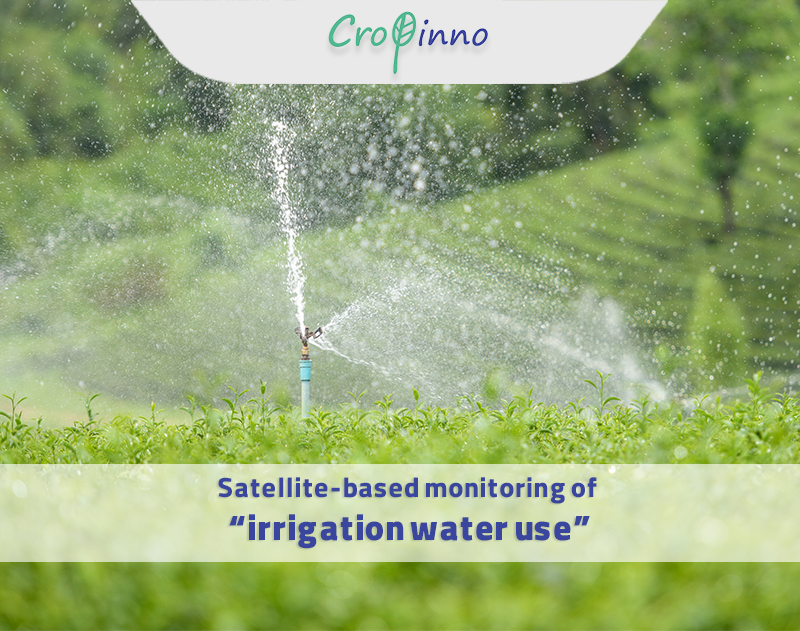Agriculture is the main sectoral user of freshwater worldwide, currently accounting for 70 percent of all freshwater withdrawals globally (and an even higher share of “consumptive water use” due to the evapotranspiration of crops), so how do we control the numbers and make agriculture more sustainable?
Population grows, so does the needs?
Food supply chain is considered a vital issue in the world, and due to rapid population growth and limited quality water resources, irrigation engineers are expected to follow water management and saving methods, as well as the use of automated irrigation methods to increase irrigation efficiency as much as possible. In fact, it is necessary to increase water use efficiency in the agricultural sector.
p.s. : Increasing the product yield (kg) per cubic meter of water consumed is called “water use efficiency”. Scheduling irrigation based on water use efficiency is the best water management scenario for any crop.
Evapotranspiration, a word which means a lot:
Lack of optimal use of irrigation water, the limited resources and increasing human needs for water and food, requires irrigation engineers to apply water management measures to save water consumption and increase irrigation efficiency. “Evapotranspiration” is one of the important factors that knowing its exact amount is necessary to estimate plant water consumption, and to design efficient irrigation systems.
First of all, let’s see what evapotranspiration is and know how it helps to consume water more intelligently.
Every living thing draws water out of its surface pores to lower its body temperature. This is called “Transpiration”. The amount of transpiration depends on the humidity, temperature and water level of the plant. The more juicy the plant, the higher the ambient temperature and the lower the humidity, the more transpiration will be. But water consumption also happens through “evaporation” from the soil surface.
Transpiration is one of the effective parameters in crop production. Assuming all the environmental conditions are favorable, the more transpiration the higher the yield of the final product.
Evaporation indicates excessive water consumption in irrigation systems.
The sum of these two processes is called evapotranspiration (ET).
Evapotranspiration refers to the amount of water that must be given to a crop for both evaporation and transpiration to happen during the growth course and to complete its growth and produce the maximum amount of crop without encountering water stress.
In fact, the calculation of evapotranspiration plays an important role in irrigation planning and in the designing of irrigation systems (such as sprinkle irrigation). Accurate estimation of potential evapotranspiration will enable agricultural planners to plan for water supply and irrigation (via water resources such as rivers, springs, underground aqueducts, and …) by determining water needs and effective rainfall.
More than 97% of the water provided to the plant is consumed in evaporation and transpiration, and therefore the plant’s water need is considered equal to evapotranspiration.
Solving the problem via satellite-based monitoring:
How can we use satellites to determine & provide the right amount of water needed in agriculture or in fact to prevent excessive water consumption?
By using an algorithm called SEBAL (Surface Energy Balance Algorithm for Land) and the remote-sensing abilities that satellites bring to us, we are able calculate spatial distribution of evapotranspiration.
The amount of energy that reaches a certain level of the earth in a certain place and season at a certain time from the sun can be calculated using the balance of incoming and outgoing radiation and short and long wavelengths on the earth’s surface, and on the other hand the amount of water that changes state with this amount of energy is also specified.
Energy, radiation and water consumption rate:
The key input information for calculations in this algorithm is collected from satellite data which includes spectral radiation in the visible, near-infrared and thermal infrared ranges. This information includes:
Pure solar radiation:
The main source of energy for the phenomenon of evaporation from the water surface is solar energy, which is the result of the balance of input and output radiations of positive and negative wavelengths on the earth’s surface. This is called “Pure Solar Radiation”.
Earth heat flow:
During the day, part of the sun’s energy is spent on soil warming and heat flow in the soil. This amount varies according to the amount of vegetation, because vegetation prevents light from reaching the ground. Surface moisture conditions also affect the rate of soil heat transfer.
Perceptible heat flow:
It is part of the pure sun radiation that is used to heat the air.
To calculate evapotranspiration, in addition to satellite data, we also need meteorological data. The required meteorological parameters include air temperature, wind speed, hours of sunshine and humidity. This information is collected from meteorological stations near each region. Also, for remote-sensing, the NOAA-AVHRR satellite provides us with the data from each region. By taking all the information into account, the energy balance algorithm (SEBAL) is able to determine the distribution of pure water consumption in the agricultural sector with a spatial resolution of 1 km in the desired time period.
Today, farmers may use AI-powered platforms such as cropinno as a tool to use collected & analyzed data around water consumption across their field and to be able to calculate their most sustainable irrigation plans according to the amount of water consumed.

